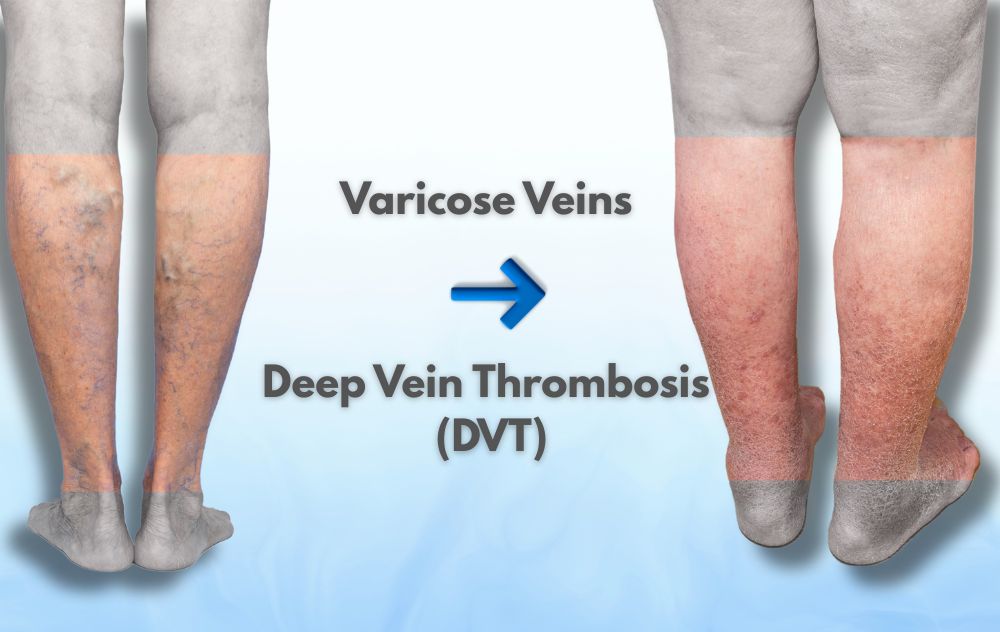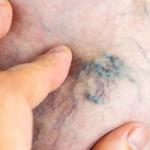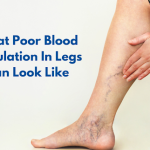
Varicose veins are a common condition that affects more than 30 million Americans. While often seen as a cosmetic concern, they may signal deeper circulation problems. A question we often hear from patients at USA Vein Clinics is: Can varicose veins turn into DVT (deep vein thrombosis)? The connection between varicose veins and DVT is complex. While the two conditions are distinct from one another and affect different parts of the vein system, severe or untreated varicose veins may increase your risk for serious complications.
What Is DVT?
Deep vein thrombosis (DVT) occurs when a blood clot forms in a deep vein—usually in the legs. If left untreated, the clot can break off and travel to the lungs, causing a pulmonary embolism (PE), which can be life-threatening.
DVT is a serious medical condition, and early detection is key to preventing complications. If you are concerned you may be experiencing symptoms of DVT, please consult your healthcare provider.
What Are Varicose Veins?
Varicose veins form when vein valves in the legs weaken or become damaged, allowing blood to pool and enlarge the veins near the surface of the skin. They often appear twisted or bulging and may cause symptoms like leg heaviness, swelling, cramping, or aching.
These veins affect superficial veins, which are closer to the skin, and are typically less dangerous than conditions affecting the deep veins.
How Blood Clots Form
Blood clots are your body’s natural defense against bleeding. When a blood vessel is injured, platelets rush to the area and work with clotting proteins to form a protective “plug.” This process is essential for healing.
However, clots can become dangerous when they form inside a vein without an injury. When blood flow slows down, pools, or becomes restricted—often in the deep veins of the legs—it can trigger the clotting process unnecessarily. This is how deep vein thrombosis (DVT) develops.
Do Varicose Veins Lead to DVT?
Varicose veins are a sign of poor circulation and damaged vein walls, which increases the likelihood of blood clots forming in the deeper veins of the leg. These clots are not the same as deep vein thrombosis (DVT) and rarely lead to a pulmonary embolism (PE), a serious condition that occurs when a clot travels to the lungs.
It’s important to clarify: DVT and PE are serious conditions that do not usually occur with varicose veins, because varicose veins typically affect superficial veins, not the deep venous system where DVT forms.
However, with severe varicose veins, especially when associated with chronic venous insufficiency (CVI), there can be an increased risk that a DVT may develop. This is especially true in situations where blood flow is extremely sluggish, or where inflammation and clotting are present.
Here’s how:
-
Sluggish blood flow: Varicose veins are a sign that blood is not circulating properly, which creates an environment where clots can form.
-
Inflammation of veins (phlebitis): This can sometimes occur in people with varicose veins, and may lead to superficial thrombophlebitis—a condition that can occasionally progress to DVT.
-
Extended immobility: Individuals with varicose veins who undergo surgery, long flights, or bed rest are at a heightened risk of clot formation.
A 2018 study published in JAMA found that individuals with varicose veins had a 5-fold increased risk of developing DVT compared to those without varicose veins1.
When Should You Worry about Varicose Veins?
DVT Warning Signs
If you have varicose veins, be vigilant about the following DVT symptoms:
-
Sudden leg pain or cramping, especially in the calf
-
Swelling in one leg
-
Skin that feels warm to the touch
-
Red or discolored skin
-
Heaviness or tightness in the leg
If you notice these symptoms, seek medical attention immediately.
Risk Factors That Overlap
Patients with varicose veins who also have the following risk factors should be particularly cautious:
-
Long periods of immobility (travel, surgery, or bed rest)
-
History of blood clots
-
Obesity
-
Pregnancy
-
Smoking
-
Use of hormone therapy or birth control
When Should You See a Vein Specialist?
If you’re experiencing leg swelling, pain, or visible vein changes, or if you’ve noticed new symptoms such as redness, tightness, or warmth in one leg, it’s essential to consult a vascular specialist.
Don’t wait for things to escalate as your legs are trying to tell you something.
Schedule Your Consultation Online
Footnotes
-
Chang, S.L., et al. (2018). Association of Varicose Veins With Incident Venous Thromboembolism and Peripheral Artery Disease. JAMA.





